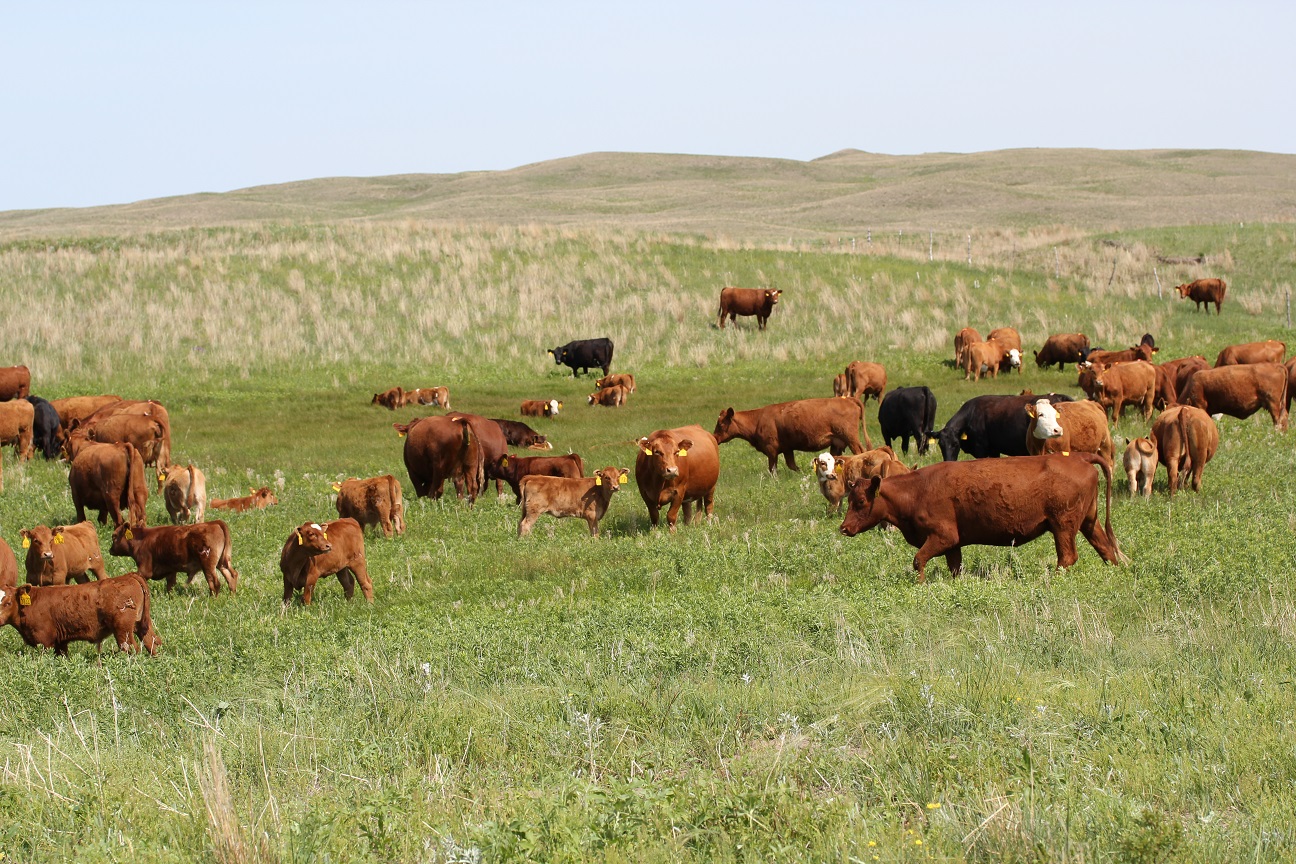
By Randy Saner, Nebraska Extension Educator
Benchmarking your herd can be an important tool to look at your cost and revenues compared to other beef producers. Producers can look at where their expenses are high compared to other similar cow/calf producers. Benchmarking can give you better feedback the more similar the operation. Once you have identified your high costs category or reduced revenues, form a strategy to overcome the challenge. Questions that you might ask yourself are: 1) can I change price, 2) can I change quantity i.e. pounds, and 3) if I change quantity, will it increase costs? Remember the simple equation for profit equals total revenue minus total costs. When we look at costs, feed costs are the largest costs that we deal with. Table 1 (http://go.unl.edu/bhqa) has Nebraska & South Dakota feed costs per cow 2015, 34 Farms.
Other costs that have significance for beef cow/calf operations are repairs, veterinary expenses, breeding fees, and total direct expenses. Table 2 (http://go.unl.edu/f2gv) shows some of these direct expenses.
Overhead expenses can also have an effect on profitability. These would include building and machinery depreciation, hired labor, property taxes, farm insurance, interest and miscellaneous (Table 3: http://go.unl.edu/nbxc).
Table 4 (http://go.unl.edu/6n0b) contains cost of production per cwt of calf produced as well as some of the production parameters for the different profitability groups.
Cost control is the key to profitability of a cow/calf operation. In some cases you may want to spend more; an example would be protein and minerals. The low profit producers spent the least amount in this area. The cow’s nutrient requirements must be met in order for adequate reproductive performance. The low profitability group had a higher culling rate. Notice the high profitability producers spent less on most costs and received a higher price per hundred weight than the low profitability producers. This data was generated from the FINBIN data at the University of Minnesota and can be found at https://finbin.umn.edu/. If you are interested in collecting data for your operation, the Nebraska Farm Business, Inc. is looking for more beef herds to enroll. They may be reached by phone at (402) 464-6324. You may also calculate your cost using the Cow-Calf Cost Cow-Q-Lator which can be found at http://extension.unl.edu/statewide/westcentral/ag-economics. There is also information on calculating your cost of production on the UNL Beef website at http://beef.unl.edu/. I may be contacted at rsaner2@unl.edu or by phone at 308-532-2683.
To listen to BeefWatch podcasts go to: https://itunes.apple.com/us/podcast/unl-beefwatch/id964198047 or paste http://feeds.feedburner.com/unlbeefwatch into your podcast app.